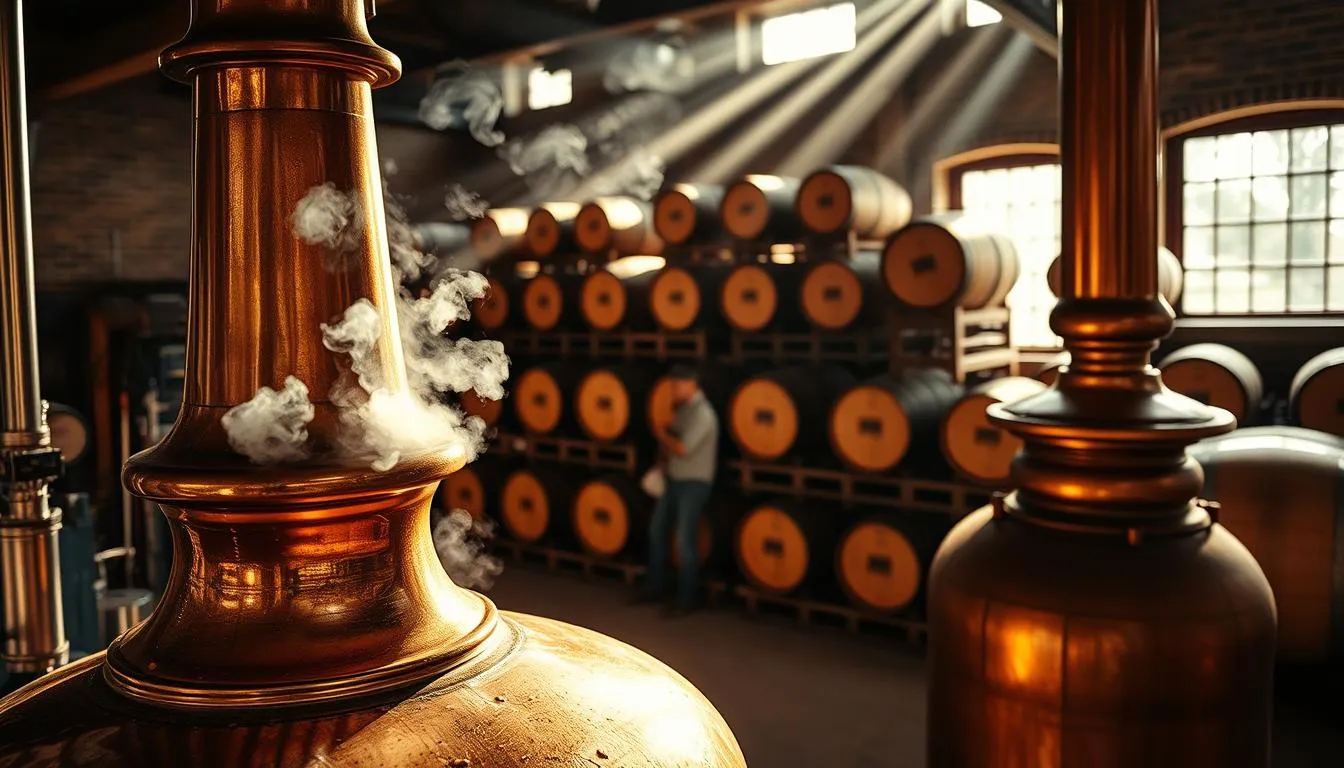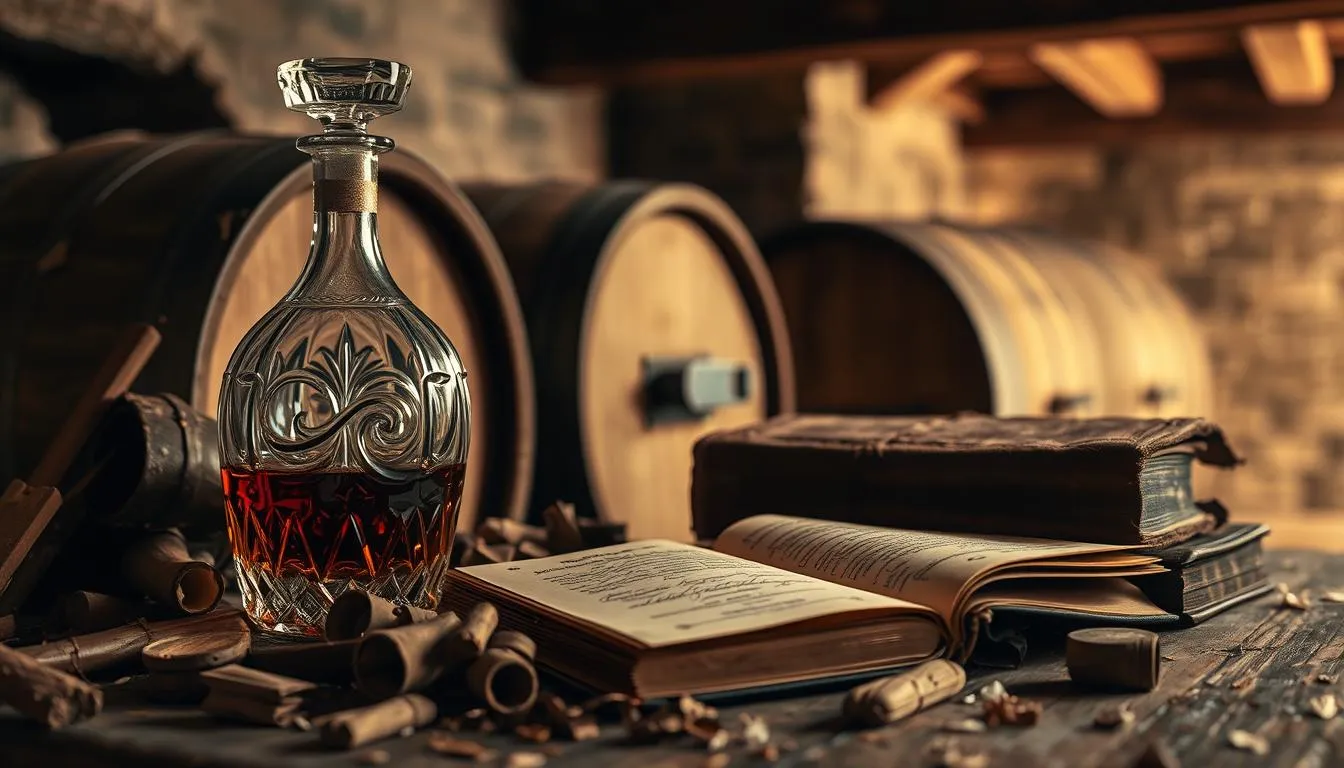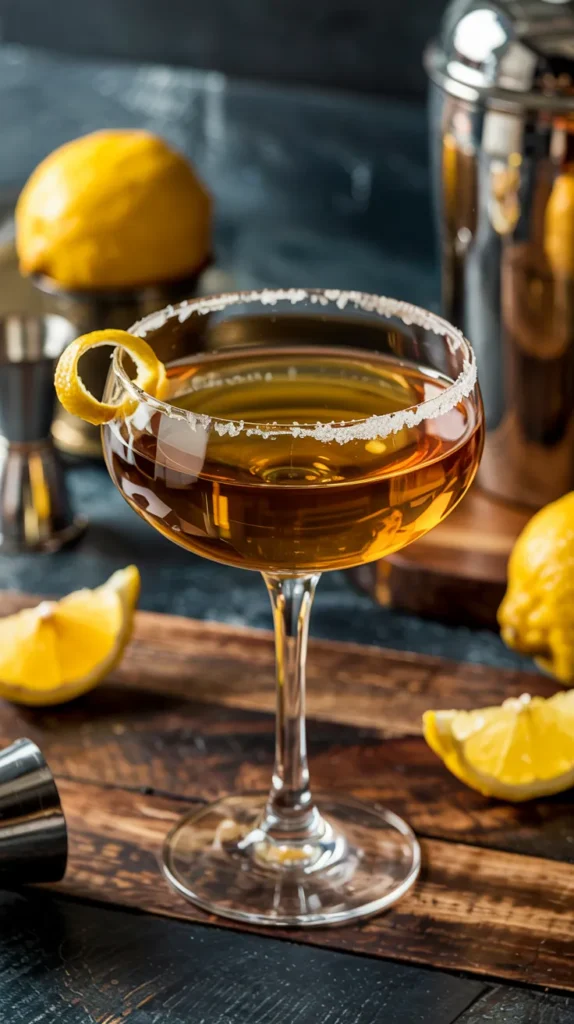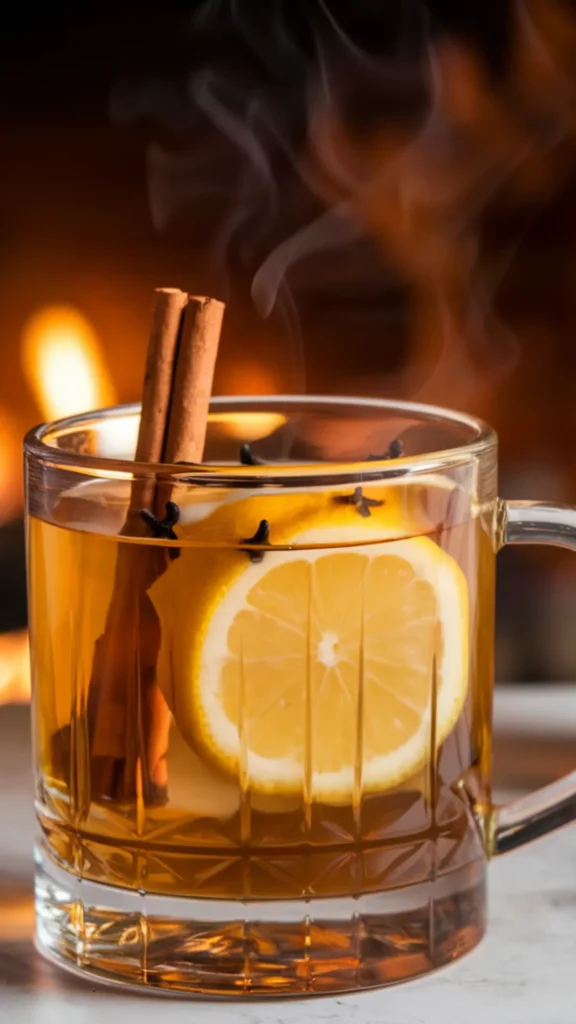When it comes to premium distilled spirits, two names that frequently spark curiosity are Brandy vs. Cognac. At first glance, these golden-hued drinks may appear identical—both are crafted from distilled wine and aged in oak barrels—but their distinctions run far deeper than appearance or alcohol content.
⚠️ Alcohol Content Disclaimer: GetUrDrinkOn.com features content related to alcoholic beverages and mixology. All content is intended for informational and entertainment purposes only. We do not sell alcohol or promote underage or irresponsible drinking. This site is intended for adults aged—21 and over in the United States, and 18 and over in most other countries. Please drink responsibly. If you or someone you know is struggling with alcohol use, please seek professional help.
So, what’s the real difference between Brandy and Cognac?

This complete guide will take you through everything you need to know: from their origins and historical backgrounds to production methods, regional regulations, flavor profiles, and the art of tasting. Whether you’re a seasoned spirits connoisseur or just beginning your journey into fine liquors, this deep dive into Brandy vs. Cognac will enhance your appreciation for both—and help you choose the right one for your next special occasion or cozy night in.
Quick Comparison Table (Brandy vs. Cognac)
| Feature | Brandy | Cognac |
|---|---|---|
| Origin | Produced globally | Cognac region, France |
| Made From | Distilled wine or fruit juice | Specific grapes like Ugni Blanc from Cognac |
| Production Method | Varies by region | Strict double distillation & aging in French oak barrels |
| Aging Requirements | Optional, varies | Minimum 2 years in oak barrels |
| Flavor Profile | Fruity, floral, sweet | Rich, complex, smooth with oak and vanilla notes |
| Quality Classification | Informal | VS, VSOP, XO based on aging time |
What Is Brandy?
Brandy is a versatile spirit distilled from fermented fruit juice—most commonly grapes. The word “brandy” originates from the Dutch term brandewijn, meaning “burnt wine,” referring to the heating process used during distillation. While grape-based brandy dominates the category, versions made from other fruits such as apples, pears, and cherries are also popular, particularly in Europe and North America.
Key Characteristics of Brandy
- Base Ingredient: Distilled from fermented wine or fruit juice (grapes, apples, pears, cherries).
- Production Regions: Made in various countries around the world, including France, Spain, the United States, Chile, and South Africa.
- Aging: Typically aged in wooden barrels, often oak, which imparts color, depth, and complexity.
- Alcohol by Volume (ABV): Ranges from 35% to 60%, depending on the type and country of origin.
Brandy is appreciated for its smooth texture, subtle fruitiness, and ability to develop rich, complex notes through aging. It is often consumed neat, used in cocktails, or sipped as a post-dinner digestif.
👉 Check out the 🛒 Stanley Legendary Classic Pre-Party Flask, a durable and stylish flask designed for portability—great for outdoor events and casual gatherings.
Popular Types of Brandy
Here are some of the most notable styles of brandy enjoyed around the world:
- Pisco – A clear, unaged brandy from South America (especially Peru and Chile). It’s known for its bold aromatics and clean finish, often used in the famous Pisco Sour cocktail.
- American Brandy – Produced mostly in California, American brandy tends to be smoother and fruitier, ideal for mixing or casual sipping.
- Spanish Brandy (Brandy de Jerez) – Aged using the solera system, Spanish brandy is rich, sweet, and sherry-like, often with notes of dried fruit, vanilla, and caramel.
- Armagnac – A French brandy that’s distilled once (unlike Cognac’s double distillation), giving it a rustic, bold character. Often described as earthier and spicier, Armagnac appeals to those who enjoy a more robust spirit.
What Is Cognac?
Cognac is a prestigious type of brandy, but not all brandy is Cognac. This refined spirit must be produced exclusively in the Cognac region of southwestern France and adhere to the meticulous standards set by the Appellation d’Origine Contrôlée (AOC)—France’s regulatory body for geographic authenticity and quality.
Regarded as one of the most highly regulated and luxurious spirits in the world, Cognac is known for its exceptional quality, smooth character, and complex flavor profile.
Key Characteristics of Cognac
- Geographic Origin: Must be produced in the legally defined Cognac region of France.
- Grapes Used: Must be made from specific white grape varieties, primarily Ugni Blanc, prized for their high acidity and low alcohol content—ideal for distillation.
- Distillation: Cognac is double distilled in traditional copper pot stills, which enhances purity and flavor concentration.
- Aging Process: Aged in French oak barrels, often from Limousin or Tronçais forests, for a minimum of 2 years (often much longer for premium classifications).
- Flavor Profile: Typically smoother, richer, and more layered than general brandy, with notes of vanilla, dried fruit, oak, spice, and floral elements.
- Labeling Terms: Includes classifications like:
- VS (Very Special) – Aged at least 2 years
- VSOP (Very Superior Old Pale) – Aged at least 4 years
- XO (Extra Old) – Aged at least 10 years (updated from 6 years in 2018)
Cognac represents the pinnacle of aged brandy, with heritage, craftsmanship, and terroir all contributing to its status as a luxury sipping spirit. Whether enjoyed neat, in a tulip glass to capture its aromatic complexity, or used in premium cocktails like the Sidecar, Cognac brings sophistication and depth to any drinking experience.
How Brandy and Cognac Are Made
Though both brandy and Cognac are distilled spirits made from fermented fruit juice—typically grapes—their production processes differ significantly, especially in terms of regulations, ingredients, and craftsmanship.
Brandy Production Process
Brandy is made in various countries around the world, resulting in a wide range of techniques and styles. However, most brandy follows these general steps:
- Fermentation
- Fresh fruit juice (most commonly grape wine) is fermented into a low-alcohol wine.
- Other fruits like apples, pears, or cherries may be used in regional styles (e.g., Calvados).
- Distillation
- The fermented wine is distilled once or twice using either pot stills (for richer flavor) or column stills (for a lighter, cleaner spirit).
- This concentrates the alcohol and aromatic compounds.
- Aging(optional but common)
- Brandy is often aged in oak barrels, which adds flavors like vanilla, spice, and toasted wood, as well as smoothness and color.
- Some brandies, like Pisco, may be unaged and clear.
- Blending
- Master blenders combine different batches or vintages to achieve a consistent flavor profile and balance between fruitiness, sweetness, and oak.

Cognac Production Process
Cognac, unlike general brandy, follows strict AOC regulations to ensure authenticity and quality. Here’s how it’s made:
- Grape Selection
- Only specific grape varieties are allowed, primarily Ugni Blanc, with Folle Blanche and Colombard used in smaller quantities.
- Grapes must be grown within the Cognac region of France.
- Fermentation
- Grapes are naturally fermented without added sugars or chemicals, resulting in a wine with low alcohol and high acidity—perfect for distillation.
- Double Distillation
- Cognac must be double distilled in copper pot stills, known as alambics charentais.
- This process captures delicate aromas and removes impurities, creating a high-quality spirit known as eaux-de-vie.
- Aging
- Eaux-de-vie is aged in French oak barrels for a minimum of 2 years (often much longer), absorbing rich flavors and developing complexity.
- Blending
- A skilled Maître de Chai (Master Blender) expertly combines different eaux-de-vie from various ages and crus to create the desired Cognac expression—whether VS, VSOP, or XO.
By understanding how brandy and Cognac are made, you gain a deeper appreciation for the artistry, tradition, and complexity that goes into every bottle. Whether you enjoy the broad diversity of brandies or the refined elegance of Cognac, both spirits offer something special for every palate.
Flavor Profile Comparison: Brandy vs. Cognac
When comparing brandy and Cognac, one of the most noticeable differences lies in their flavor profiles. While both are distilled from fermented fruit, their aging methods, grape varieties, and regions of origin significantly influence their aroma, taste, and finish.
Brandy Flavor Profile
Brandy is often fruit-forward and approachable, making it a favorite for casual sipping or cocktail mixing.
- Aroma:
Light and fragrant, with fruity and floral notes. Depending on the fruit used and aging process, aromas may include apple, pear, peach, plum, or dried fig. - Taste:
Generally light to medium-bodied, with flavors of dried fruit, wildflowers, and a touch of sweetness. Some brandies may exhibit hints of honey, almond, or spice from oak aging. - Finish:
Typically smooth and warming, with a gentle lingering sweetness. Younger brandies may finish more sharply, while aged expressions tend to be rounder and mellower.
Best For:
Beginners, fruit-forward cocktails, light after-dinner sips
Cognac Flavor Profile
Cognac is celebrated for its depth, elegance, and refined complexity, shaped by its strict aging and blending traditions.
- Aroma:
Intensely aromatic, featuring rich layers of oak, vanilla, dried fruit, spice, and occasionally floral or nutty undertones. - Taste:
Full-bodied and velvety, with sophisticated layers of raisin, fig, caramel, toasted oak, cinnamon, and dark chocolate. The double distillation process refines its flavor into something exceptionally smooth and complex. - Finish:
Long, warm, and luxurious, often described as silky with a lingering sensation of spice and wood.
Best For:
Sipping neat, pairing with dessert, or for connoisseurs seeking rich, nuanced spirits.
By understanding these distinct flavor differences, you can choose the right spirit based on your mood, palate, or occasion. Whether you’re drawn to the bright fruitiness of brandy or the deep elegance of Cognac, each offers a unique tasting experience.
The History of Brandy & Cognac
Understanding the history of brandy and Cognac offers insight into how these two iconic spirits evolved from humble beginnings to become cornerstones of global drinking culture.

The Origins of Brandy
The story of brandy begins in the 12th century, when early distillation techniques were used primarily for medicinal purposes. As the art of distillation spread throughout Europe, winemakers began refining their methods to create more palatable and enjoyable spirits.
By the 16th century, brandy had gained widespread popularity not only as a healing tonic, but also as a luxury beverage enjoyed by European nobility. The term “brandy” comes from the Dutch word “brandewijn”, meaning “burnt wine,” referencing the distillation process that transforms wine into a concentrated spirit.
Over time, various regions began developing their own styles of brandy—each shaped by local fruits, climate, and aging practices. These regional expressions paved the way for globally recognized varieties like Armagnac (France), Pisco (Peru/Chile), and Spanish brandy from Jerez.
The Birth of Cognac
Cognac, a specific type of brandy, was born in the 17th century in the Cognac region of southwestern France. Local winemakers sought a way to preserve their white wines during export to Northern Europe, particularly England and the Netherlands. Their solution? Distill the wine into a more stable form known as “eaux-de-vie” (French for “water of life”).
What began as a preservation technique soon turned into an art form. Through double distillation in copper pot stills and long aging in French oak barrels, Cognac evolved into a refined, luxurious spirit admired around the world.
Key Milestones in Cognac History
| Year | Milestone |
|---|---|
| 17th Century | Cognac production begins in southwestern France |
| 1909 | Cognac region officially designated by French law |
| 1936 | Cognac receives Appellation d’Origine Contrôlée (AOC) status, protecting its name and production methods |
This legacy of craftsmanship and regulation ensures that every bottle of Cognac upholds the centuries-old traditions that make it one of the world’s most revered spirits.
How to Serve and Enjoy Brandy & Cognac
Appreciating the full character of brandy and Cognac comes down to more than just sipping—it’s about the ritual, the glassware, the temperature, and the occasion. These luxurious spirits offer distinct tasting experiences, whether savored neat or enjoyed in refined cocktails.
Brandy: Classic Elegance in a Glass
Brandy is a versatile and warming spirit, often favored as an after-dinner drink. Here’s how to serve and enjoy it properly:
- Serve Neat in a Snifter Glass: The wide bowl and narrow top of a snifter allows aromas to concentrate, enhancing the tasting experience.
- Ideal as a Digestif: Sip slowly after a meal to aid digestion and unwind.
- Used in Timeless Cocktails:
- Sidecar: A zesty mix of brandy, triple sec, and lemon juice.
- Brandy Alexander: Creamy and indulgent with brandy, crème de cacao, and cream.
- Hot Toddy: Perfect for cold nights—brandy, hot water, honey, and spices.
💡 Pro Tip: Let the brandy breathe for a few minutes before sipping to release its full bouquet of flavors.
Cognac: Sophisticated and Sensory
Cognac, with its refined production methods and complexity, deserves to be served with care:
- Best Served Neat in a Tulip Glass: The tulip shape captures the aromatic depth and allows a more nuanced tasting.
- Slightly Warmed by Hand: Holding the glass gently allows your body heat to unlock deeper notes of spice, oak, and fruit.
- Perfect in Premium Cocktails:
- French 75: Cognac, lemon juice, sugar, topped with Champagne—a luxurious twist on the classic.
- Sazerac: A bold, aromatic blend of Cognac, absinthe, bitters, and sugar.
- Elegant Pairings:
- Dark chocolate
- Blue cheese or aged cheddar
- Rich desserts like crème brûlée
💡 Pro Tip: Try a vertical tasting of different Cognac ages (VS, VSOP, XO) to appreciate how time in oak enhances its complexity.
Whether you’re relaxing solo or celebrating in style, these serving tips will elevate your brandy or Cognac experience and help you savor the artistry in every sip.
Quality Classifications: Brandy vs. Cognac
Brandy Classification
Unlike Cognac, brandy classification is not standardized globally. Each country or producer may follow different aging and quality indicators. However, general terms such as “VS,” “VSOP,” and “XO” are often used informally to describe quality levels—even if not legally regulated.
- No universal grading system
- Quality may vary widely based on region and brand
- Labels often reflect style and tradition, not strict regulation
📌 Note: Always check the producer’s labeling standards, especially for non-French brandies.
Cognac Classification (Strictly Regulated)
Cognac, being a protected designation of origin, must follow Appellation d’Origine Contrôlée (AOC) standards. Aging plays a vital role in determining the classification:
| Label | Meaning | Minimum Aging (in Oak Barrels) |
|---|---|---|
| VS (Very Special) | Youngest eaux-de-vie in the blend aged at least | 2 years |
| VSOP (Very Superior Old Pale) | Aged a minimum of | 4 years |
| XO (Extra Old) | Previously 6 years, now aged at least | 10 years |
| XXO (Extra Extra Old) | The rarest grade, aged over | 14 years |
💡 Pro Tip: Older Cognacs are smoother, more complex, and command higher prices. Look for these designations when selecting a high-end bottle.
Regional Varieties
Brandy Around the World
Brandy is produced globally with distinct regional styles and ingredients:
- Spain – Brandy de Jerez: Aged using the solera system, often sweet and rich.
- United States – American Brandy: Fruit-forward and versatile; varies widely by producer.
- France – Armagnac & Calvados:
- Armagnac: Single-distilled, bold, rustic flavor from Gascony.
- Calvados: Apple-based brandy from Normandy.
- South America – Pisco: Clear brandy from Peru and Chile, unaged and highly aromatic.
Cognac: A Singular Origin
Cognac is exclusively produced in the Cognac region of southwestern France, with 6 legally defined crus (growing areas):
| Cru | Characteristics |
|---|---|
| Grande Champagne | Finest, most delicate Cognacs; long aging potential |
| Petite Champagne | Similar to Grande, slightly less refined |
| Borderies | Floral, round, aromatic Cognacs |
| Fins Bois | Fruity, supple; ages faster |
| Bons Bois | Earthier notes, less complexity |
| Bois Ordinaire | Youngest and simplest Cognacs |
💡 Blends labeled “Fine Champagne” contain at least 50% Grande Champagne, with the remainder from Petite Champagne.
👉 Upgrade your home setup with the sleek and functional 🛒 Zarler Bar Cart Bar Table with LED lighting, power outlet, and 4-tier liquor storage—perfect for any modern home bar.
Brandy vs. Cognac: Which Should You Choose?
When deciding between brandy and cognac, your choice ultimately depends on your taste preferences and the experience you’re seeking.
- Choose brandy if you enjoy a light, fruity, and versatile flavor profile. Brandy offers a wide range of styles from various regions and is often more accessible in price and taste.
- Choose cognac if you’re looking for a richer, smoother, and more complex spirit. With its strict production methods and aging requirements, cognac delivers a refined experience prized by connoisseurs.
Both spirits share a storied history and reflect the craftsmanship of their regions. Whether sipped neat, paired with dessert, or mixed into classic cocktails, each offers a unique journey in every glass.
💡 Our advice? Try both. Explore their differences, savor their similarities, and let your palate decide. Cheers to discovering your next favorite spirit!
📌 Related Read: The History of Whiskey: From Ancient Origins to Modern Distilling
Join the Conversation!
Drop your thoughts in the comments below and let’s chat about all things beverage!
Frequently Asked Question (FAQ)
Brandy is a broad term for spirits made by distilling wine. Cognac, on the other hand, is a specific type of brandy. It must be produced in the Cognac region of France using certain grape varieties and methods.
Brandy is a spirit made by distilling wine, usually from grapes. The distillation heats the wine to separate its components. This results in a high-proof spirit.
Cognac is unique because it must be made from specific grapes and follow strict production methods. The Cognac region’s terroir also adds to its distinct flavor.
The main differences lie in grape types, distillation, and aging. Cognac uses specific grapes and follows stricter methods than brandy.
Brandy and cognac have a long history. Their production methods and aging processes have evolved over centuries. Regional differences, technological advancements, and generations of distillers have shaped them.
Making brandy and cognac involves traditional distillation and careful aging. Regional specifications and grape varieties contribute to their unique characteristics.
Brandy often has fruitier, more robust flavors. Cognac is known for its complex, nuanced taste. The color and appearance also vary based on aging and quality.






